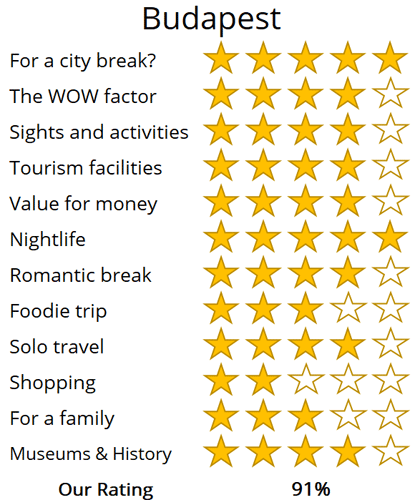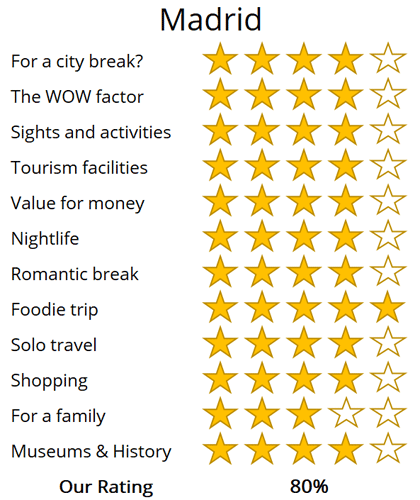WhereToGoForMyHoliday.com
The best destination comparison site!
WhereToGoForMyHoliday.com
The best destination comparison site!
Budapest or Madrid, which is better for your holiday in 2024?
Madrid and Budapest both offer unique and enticing experiences, but which one should you choose for your city break or holiday?
We recognise the difficulty in making this decision. While there is abundant information available on both destinations, clear guidance on which city better aligns with your travel preferences is often hard to find.
This article aims to provide an impartial comparison,and hopefully help you to choose the best city to visit.
The article is structured into several sections, each of which can be directly accessed through the following links:
• Introduction to the cities
• Scores and ratings
• Which one should I, friends, or family visit?
• When to visit and weather
• Who is the city suited for?
• The perfect 48hours (with map)
• Tourism details (where to stay? airport details?)
Introduction to Madrid and Budapest
Being the original artisan city of western Europe, Madrid’s galleries and museums are unrivalled, and are a staple for any cultural holiday.
However beneath this formal exterior is a young and passionate city, with thrilling nightlife, delicious food and genuinely welcoming locals.
The visitors who rave most about Madrid are the long-stay residents – and there is something captivating about the city. The Museo del Prado, the Reina Sofía and the Bernabéu Stadium, for a different type of culture. Just avoid Madrid in August, when the entire city shuts down for the summer holidays.
Straddling the snaking Danube in the very heart of Europe is Budapest, the buzzing capital of Hungary.
Here, a city of two halves – Buda and Pest – unites to form a complex tapestry of over 1.7 million lives. With grand 19th-century bridges stitching together the landscape, Budapest entices with its blend of storied history, striking architecture, café charm, and lively nightspots.
Whether your eyes are drawn to the regal palaces atop Buda Hill or the heady aroma of sulphur from steaming bathhouses, Budapest never ceases to captivate. Venture into ruin bars, gaze upon the monumental Dohány Street Synagogue, or stroll the wide boulevards left behind by the Communist era.
In Budapest, every glance reveals a new layer of intrigue, a city where the past and present are locked in an endless dance.
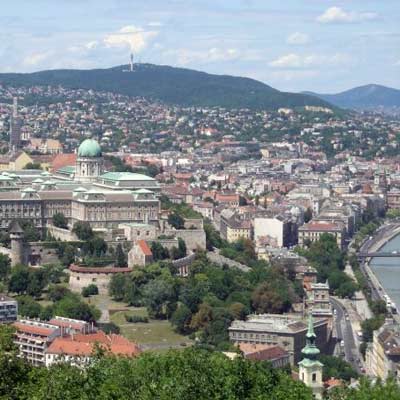
Budapest is a vibrant and modern city just waiting to be explored

The Plaza Mayor and the historic centre of Madrid
High-level summary for Budapest and Madrid
Summary
Where would I journey for a personal escape?
Madrid
Where would I send my parents for a memorable visit?
Madrid
Where's the ideal destination for my adventurous 19-year-old cousin?
Budapest
Where should my food-obsessed friend indulge their culinary passions?
Madrid
Note: The above comparisons are weather-independent and are based on travel during the most opportune times of the year. Details about the ideal travel seasons are elaborated upon later in this article.
In the sections that follow, you'll find a comprehensive comparison between these two fascinating cities. This includes recommendations on the duration of stay, the best times to visit, and tailored 48-hour itineraries for each city.
The final segment delves into practicalities for your travels, such as the best airport to fly into, the optimal districts for your accommodation, and insider tips, for when you come to explore the city.
We hope that you find all of this information useful, in planning your next exciting trip!
Destination details
How long to spend each city?
Fly-in visits for three days are enough to check off the major must-see sights of Budapest. This is a compact capital with good underground and bus links. You can get easily get across town – going from Buda Castle on one side of the city all the way to the Széchenyi Thermal Baths at the other takes less than an hour on public transport.
That said, Budapest has plenty of hidden secrets up its sleeve. You could easily while away a whole week enjoying cheap happy hours in the ruin bars, bathing in the Art Deco spas, and visiting islands up the Danube. If you're coming in summer, you could also extend a stay to include the art galleries and cobbled lanes of Szentendre, the mineral-rich waters of Lake Balaton, and the rustic Tokaj wine country to the east.
For Madrid, the length of stay greatly depends on how much you want to devote to visit the three famed art galleries (Prado Museum, Thyssen-Bornemisza and Reina Sofía), or immerse into Spanish culture. The city can be seen in two days of sightseeing, and a third day is often given to the galleries.
There are many outstanding day trips from Madrid and a trip can be easily extended to 5 or 6 days. A selection of the best day trips includes the medieval town of Segovia, charming Toledo, and the magnificent El Escorial. Madrid makes for a good base from which to explore the region, and is served by inexpensive public transport
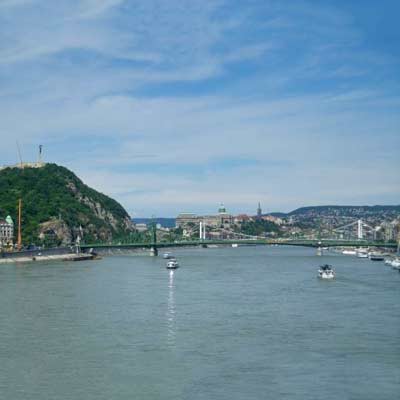
The mighty Danube River cuts Budapest in two
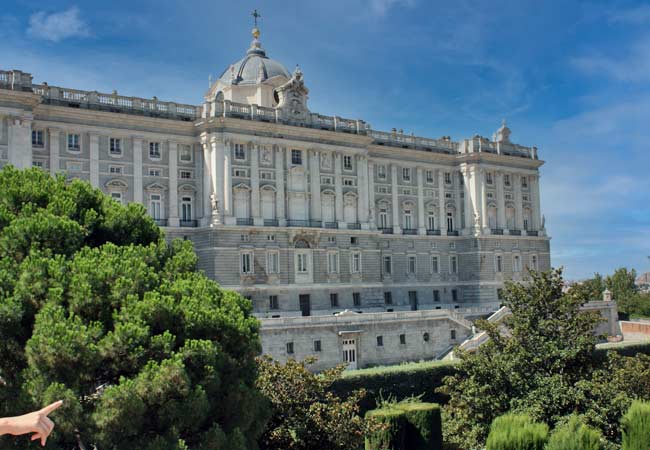
The magnificent Palacio Real in Madrid
Late spring and early autumn are when locals often say Budapest is at its best. Temperatures average around 23-25 degrees in May and September. There's not an overload of rain then either. And it's perfect for avoiding the crowds of midsummer city breakers that come during the European holidays.
There's also something to be said for visiting Budapest in the midst of winter. Mercury plummets between November and March, and it's not uncommon to see the Danube freeze over with huge chunks of ice. What's more, the tenements and side streets of the Jewish Quarter and the historic Inner City areas ooze atmosphere on cold, snowy days. Just be sure to pack the thermals!
The major consideration for Madrid, is to avoid August. The entire city shuts down for the month, and everyone heads to the slightly cooler coastal towns.
The best time of year for Madrid is late spring (Jun/Jul) or early autumn. Madrid can be surprisingly chilly in the winter, but is comparatively drier and milder than the rest of northern Europe. As Madrid is in the centre of the Iberian Peninsula, it tends to get more extreme weather than the coastal cities.
Madrid is one of the finest cities in Europe. The city may not have the iconic monuments and attention-grabbing tourist attractions, but in reality, there is a lot to see during a city break.
Much of Madrid’s tourist literature focuses on the museums and galleries (which are world-class), but this should not deter you; this is a fun-loving city, which has the best nightlife in Europe. No matter your style of trip, there will be something to love about the Spanish capital.
Madrid excels as a long-stay destination, and if you can work here, the city offers the perfect work/life balance.
Budapest, with its rich historical culture, intertwined seamlessly with an energetic nightlife, has established it as a top destination for a diverse range of travellers. Backpackers gravitate towards the Jewish Quarter's unique ruin bars, where they can indulge in exceptionally affordable Hungarian beers amidst eclectic courtyards.
Meanwhile, those with a cultural focus may choose to delve into the history of the Hungarian empire at Buda Castle or pay homage at the poignant House of Terror museum, which delves into the oppressive Stasi era.
However, if your preference leans towards sun-soaked beaches, Budapest might not feel like a perfect fit. Situated in a landlocked region, both the city and the country are devoid of coastline. Furthermore, while there are parks, they are predominantly located on the city's periphery, making Budapest predominantly an urban experience.

The Museo Nacional del Prado, is one of the finest art galleries in the world
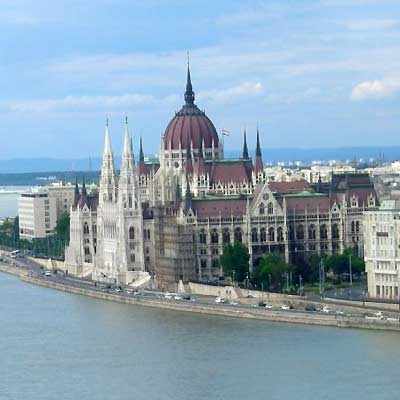
The Hungarian Parliament stands as a stunning testament to Budapest's architectural grandeur, holding the title of the city's tallest building
48hours in Budapest
Day 1: Begin your journey on the Pest side of the city, where the magnificent Dohány Street Synagogue resides. This landmark is not only pivotal to Budapest but also stands as the largest synagogue in Europe. Following this, take a stroll along Andrássy Avenue, a grand boulevard and UNESCO World Heritage site, adorned with Neo-Classical mansions.
Delve into Hungary’s tumultuous history with a visit to the House of Terror museum, situated at one end of the avenue. Subsequently, unwind with a spa session at the renowned Széchenyi Baths, celebrated for its Art Deco architecture. Cap off the day with a hearty dinner at Gettó Gulyás, indulging in their signature paprika-smoked goulash, and conclude your evening with a drink at Szimpla Kert, a mesmerizing art gallery turned bar.
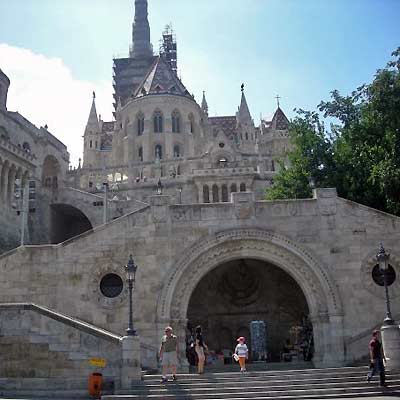
Pest cathedral
Day 2: Start your day with breakfast at the historic Central Market Hall, established in 1897. Savour the taste of sweet Hungarian pastries before crossing the Danube via the striking Liberty Bridge.
Upon arrival, you have the option to visit the elegant Gellért Baths or continue your journey to the Fisherman's Bastion and the Citadella, former military strongholds that now offer breathtaking views of the Danube. A northward stroll leads you to the Castle District, where you can either admire the architecture from the outside or explore the regal court rooms inside.
Don’t miss the chance to capture some photos of the imposing Hungarian Parliament Building across the river. Conclude your day with dinner in the Inner City of Pest, offering a diverse range of dining options from Tex-Mex restaurants to atmospheric 1930s speakeasies.

Gellért Hill offers some of the best views of Budapest, the hill is named after Saint Gerard who was murdered in 1065 by being put in a barrel and rolled down the hill…
Madrid
48 hours in Madrid is not just the sights but also the atmosphere of the city. Below is an interactive tour map - day 1 is highlighted in green and day 2 in yellow, with optional sights marked grey.
Day 1 - 1) Puerta del Sol 2) Plaza Mayor 3) Plaza de la Villa 4) Mercado de San Miguel 5) Plaza de Oriente 7) Palacio Real 8) Almudena cathedral 9) Basílica de san Francisco 10) Calle de la Cava Alta
Day 2 - 11) Prado museum 12) Thyssen-Bornemisza Museum13) Museo Nacional Reina Sofía 14) Parque de El Retiro 15) Puerta de Alcalá 16) Palacio de Cibeles 17) Gran Vía 18) Malasaña district 19) Plaza de España 20) Templo de Debod
The 48 hours in Madrid begins in the Puerta del Sol, then wanders through charming streets of the El Madrid de los Austrias, which is the oldest section of the city. This leads to the Palacio Real, surrounded by its formal gardens and the Catedral de la Almudena to the south.
For the last part of the day explore the La Latina district and have a delicious tapas meal at one of the restaurants along the Cava Alta or Cava Baja. La Latina boasts numerous bars and is always a great place to start a night in Madrid.
The morning of the second focuses on the three art-museums, the Prado Museum, Thyssen-Bornemisza and Reina Sofía. Close to the museums is the pretty the El Retiro Park.
For the afternoon head down the Gran Vía, the main shopping street of Madrid, and visit the Malasaña district, with its artisan vibe, independent shops and trendy nightlife. For sunset watch it at the Templo de Debod, and then head back to Malasaña for a memorable meal and evening.

The atmospheric Templo de Debod, is Egyptian temple which was moved to Madrid in 1968, due to the construction of the Aswan dam (which would have flooded the temple)

The Gran Vía is the bustling main avenue of Madrid
If you choose a good season to visit, then Madrid is ideal for a city break. There is just one airport severing Madrid and is only 13km from the historic centre. For onward travel take the metro (€1.50 single – 30 minutes). For flights, there is always high demand for Friday/Sunday flights to/from Madrid, so if planning a city break always book at least 6-8 weeks in advance.
On initial appearance Madrid seems to have ample supply of hotel and rental rooms, but this is slightly misleading, as the city is so sprawling.
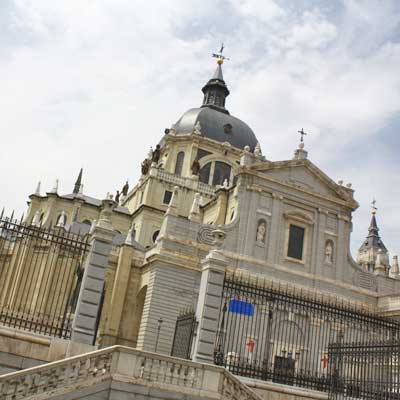
The Catedral de la Almudena
For your first visit, you would want to be based in the Centro or Retiro districts, and this will limit accommodation options. If you do wish a more remote, budget option always ensure it is close to a metro station. While exploring Madrid, you will do a surprising amount of walking.
Travelling to and around Budapest is super easy. There's an efficient underground network. Tickets for that cost 350 HUF per ride with a single transfer allowed. You can also use river boats (HUF750 per journey) and buses (350 HUF).
Taxis are rarely needed, but they are cheap, costing 280 HUF per kilometer. Be sure to insist your driver puts the meter on, and never accept offers from taxi touts at the airport.

The Fisherman's Bastion, Budapest
Talking of the airport, Budapest Airport sits around 22 kilometers from the city center. You can get to and from the terminals using the dedicated express bus (€2) or by train (€2.70). Both options take between 30-40 minutes. Be sure to buy tickets at machines by the stops – they're more expensive when purchased direct from drivers.
When it comes to picking hotels in Budapest, you're best off focussing on the Pest side of the city. That's where the bulk of the best lodgings are located. Being in the Jewish Quarter can be noisy, but perfect if you want to hit the nightlife of Szimpla and the other ruin bars. The Inner City area is charming and quieter, with some boutique options. Meanwhile, Újlipótváros is a local's favourite, with its cool cafés and art galleries and sleek Airbnbs.
Related articles: Where to stay in Budapest
Budapest is largely safe and crime statistics are in line with European norms. Some well-known scams include taxi drivers who overcharge and sellers of fake goods. Pickpocketing is also a rare but real problem. Just be aware of your personal possessions and be vigilante, especially when on public transportation.
Price wise, Budapest is surely up there with the cheapest of European capitals. A large beer can cost as little as 500 HUF (€1.50). Food in a midrange restaurant will set you back between 2,000 HUF and 3,000 HUF (€6-9). Nights in hotels are noticeably less than in nearby Vienna, too.

oh we were stuck in the airport!

Copenhagen was a bit expensive...

All we did was drink beer in Brussels...

Muncih was crazy

And we got so burnt!

Remeber that night in Rome

oh we were stuck in the airport

So much fun kayaking

Berlin and that group from Austria!

There was such a view from that church

And we got so burnt!

Munich was eventful, wasn't it!

Such a view from that cathedral in Florence

Lisbon was such so much fun

Last summer was so much fun .... x

Remeber that night in Rome

Lisbon was such so much fun

Such a view from that cathedral in Florence

Munich was eventful, wasn't it!

And we got so burnt!

Remeber that night in Rome

All we did was drink beer in Brussels...

Berlin and that group from Austria!

Can't wait to go back to Dubrovnik

Remember that boat ride in Prague

Copenhagen was a bit expensive...
